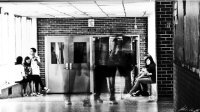Response to Intervention: Resources for Educators
Explore resources to help understand, implement, or refine Response to Intervention.
Your content has been saved!
Go to My Saved Content.Over the past decade, Response to Intervention (RTI) has seen widespread use in schools as an effective way to promote student learning. Originally developed to help students with learning disabilities, RTI’s success has led to its use for all students at a school, not just for those with specialized needs. The approach has several key components:
- Multi-tiered instruction: All students receive Tier 1 support. Students that need additional help (typically about 15 percent of students) also receive Tier 2 support in small groups. About five percent of students receive intensive, one-on-one, Tier 3 support.
- Ongoing assessment: All students undergo regular monitoring to determine whether they need Tier 1, Tier 2, or Tier 3 support.
- Collaborative decision-making: Schools often use a team of educators (such as general education teachers, learning specialists, and school counselors) to make decisions about what supports a student may need. Parents are also heavily involved.
RTI models vary across schools and states. Also known as Response to Instruction and Intervention (RTII), which emphasizes research-based instruction at its core, RTI is often paired with Positive Behavioral Intervention and Supports (PBIS), which supports students’ emotional needs. More recently, Multi-Tiered System of Supports (MTSS) is being used as an umbrella term that includes academic, behavioral, social, and emotional supports for students.
Getting Started With RTI
- State/local departments of education are excellent sources for RTI information. Visit the California Department of Education, the Texas Education Agency, and the New York City Department of Education to learn more.
- What Is Response to Intervention?: Explore resources for RTI based on whole-class, small-group, or individual support. (ASCD)
- Getting Started Guide: Learn more about the various phases of RTI implementation, from building support to developing and evaluating your program. (RTI Action Network)
- Using an RTI Framework to Improve Student Learning (PDF): Read this pocket guide to learn how using a research-based RTI framework can improve learning for all students, particularly in low-performing schools and those with large achievement gaps. (American Institutes for Research, 2013)
- Ask the Expert: Watch over two dozen videos with expert answers for commonly asked questions such as, "How does the RTI Framework intersect with the Common Core State Standards Initiative?" (Center on Response to Intervention)
Implementing RTI at Your School
- How to Implement Response to Intervention at the Secondary Level: Read implementation advice from a high school principal. (Edutopia, 2011)
- Intervention for Failing Students: What Matters Most?: Find tips on how to give teachers a voice in your school's RTI program. (Edutopia, 2011)
- Small Group Work With "I Choose": Discover how an elementary school made time for small-group work through a program called "I Choose." (Edutopia, 2015)
- RTI Rubrics, Videos, and Links: Download tools and watch videos to help guide the implementation of RTI. (Colorado Department of Education)
- Assisting Students Struggling with Mathematics: RTI for Elementary and Middle Schools (PDF): Use this guide to address the needs of students struggling with math. Assisting Students Struggling with Reading (PDF) is also available. (U.S. Department of Education, 2009)
Assessing Student Learning
- Implementer Series: Understanding Types of Assessment within an RTI Framework: Explore a series of self-paced learning modules that explain the types of assessments commonly used within an RTI framework. (Center on Response to Intervention)
- The Role of Assessment in RTI: Use this guide to better understand how assessments play a key role in determining whether a student should receive Tier 1, Tier 2, or Tier 3 support. (Pearson Education)
- Ongoing Student Assessment: Learn more about RTI assessment in this series of articles. (RTI Action Network)
Reaching Out to Parents
- A Parent’s Guide to RTI (PDF): Share this guide with parents to provide useful tips for getting involved in their child's learning. (National Center for Learning Disabilities, 2011)
- RTII Fact Sheet for Parents (PDF): Help parents learn more about RTI with this FAQ. (Pennsylvania Department of Education)
- Informing Parents of Their Child's Needs: MTSS Parent Letter (PDF): Use this sample letter to inform parents of their child’s needs and how the school will address those needs. (P.K. Yonge Developmental Research School, 2014)
Resources for Funding RTI
- Federal Funding to Support RTI: Learn more about how you can use IDEA, Title I, and Title III funds to support RTI services and professional development. (RTI Action Network)
- Funding for RTI Explained: Watch this brief video for an overview of RTI funding options. (Pearson)
- Response to Intervention (RTI): Funding Questions and Answers (PDF): Read this in-depth guide to answer many complex questions about RTI funding. (National Center on Response to Intervention)
The Research Behind RTI
- Research Spotlight on RTI: Dig into an overview of the research on RTI, and learn more about the essential components of a successful program. (National Education Association)
- Research Support for RTI: Learn about effective RTI implementation, including efficacy studies as well as best practices. (RTI Action Network)
- Study: RTI Practice Falls Short of Promise: Read about research that found how RTI may not be as effective for first-grade students as initially thought. (EdWeek, 2015)
Downloads and Examples From Schools That Work
At Charles R. Drew Charter School, the Literacy Center and Math Lab provide fun, engaging, and enriching interventions to help support students most in need.
Learn how educators at Meyer Elementary School support student needs and growth through their RTI program.
P.K. Yonge uses Multi-Tiered System of Supports (MTSS) to meet the learning needs of its high school students. MTSS is similar to RTI, with an added emphasis on behavioral support.
